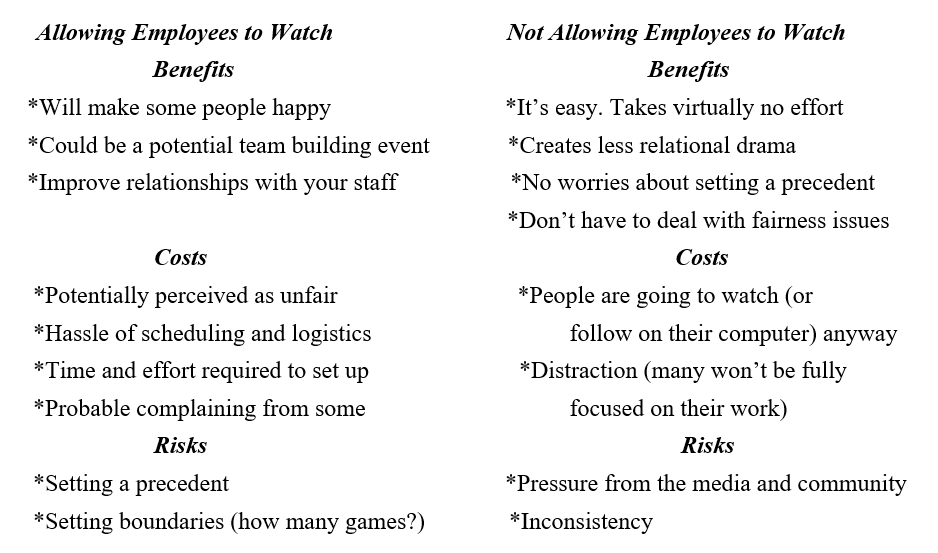March Madness in the Workplace
Every Spring a national sporting event captures the attention of millions of employees: the NCAA March Madness basketball tournaments. Individuals who are die-hard basketball fans, those who may follow their local college team or alma mater, and people who just like to complete brackets by picking teams according to their mascots – all become intrigued and involved in the games and filling out brackets.
Understanding March Madness
While March Madness is typically referred to as a singular event, those familiar with the tournaments know that they are actually a series of games and regional tournaments over a three-week period. The process begins with Selection Sunday where the 68 teams who get to play in the tournament are announced. Individuals then fill out their game brackets to choose who they think will win each individual game and eventually, the championship. There often are informal pools for betting on the winners, and more formal versions fans set up on the Internet. The “win or go home” format takes teams from pre-tournament play-in games, through to the Sweet Sixteen, Elite Eight, the Final Four and then the championship game.
The Impact of March Madness on Work
Why is it important for supervisors, managers and employers to understand March Madness? Because for many employees, March Madness becomes an important part of their life, influencing their thought time, emotions, and relationships – both personally and at work. And secondly, because many of the games (especially in the first two weeks) are played during the day on weekdays. This creates some challenges at work.
When a game is being played, it is available on television, radio and various streaming services. So, many employees are distracted from their work while a game important to them (or for some people, any game) is being played. Sometimes, when a local team is playing, the whole city or vicinity seemingly shuts down to watch – and the experience can actually become a team building experience among colleagues.
The Dilemmas Raised
This raises the question for managers: how should we handle these situations?
- Do we give people the freedom to watch (essentially, providing time off of work)?
- Do we set up a formal process where they can use personal time to watch the game?
- If they are salaried employees, do we allow them to manage their time as they wish as long as they fulfill their obligations?
- Do we make no allowances and suggest they record the game to watch later?
- What do we do if we know people are watching on the sly at their desks or lingering longer in the break room?
Some Guiding Principles
There are numerous, overlapping issues that need to be considered, including any legal implications regarding unequal treatment of employees, how to serve your clients best, decision-making and communication processes, and staff morale.
Let me make some suggestions that can help avoid creating undesired results:
- Whatever options you are considering, be sure and pass them by your HR manager (or your HR legal consultant) to make sure you are not breaking any laws or creating significant risk for being sued for how you handle the issue.
- Understand that individuals feel valued and appreciated in different ways (words of praise, time and attention, help with projects, and tangible gifts are some). While watching the NCAA tournament games may not be important to you, to some of your employees it is extremely so. Think of someone who attends all of the games, travels to away games, wears the college’s sportswear, and talks a lot about the team. You can really hit the mark by making it possible for them to watch the game – and employees often respond with sincere appreciation and a higher sense of loyalty to you.
- Discuss the situation with your management team, sales and customer service representatives and make sure you understand the needs of your clients, approaching deadlines, and how you can be responsive during the games, when needed.
- Consider the Benefits, Costs and Potential Risks. Although there are many options on the continuum, if we simplify the options into: a) giving employees flex time to watch the games, and b) not allowing employees to watch the games during work, the following results can be considered.
5. Communicate. COMMUNICATE. COMMUNICATE. What seems like a good idea (and a fairly innocuous way of being nice to your employees) can become a nightmare, leading to hurt feelings and frustration, and even major conflict. Talk with your managers and supervisors. Get input from those you know who are interested in watching the games, and hear from those who have no interest at all. Then be clear who is making the decision, how and by when the decision will be made, and the alternatives available (people love choices). Consider including communicating the principles and factors by which the decision was made.
Final Issues to Consider
There is no right or wrong answer for how best to deal with March Madness in the workplace. And the choice you make may vary according to the specific circumstances each year – your local team is involved, there are too many deadlines to meet, etc.
Essentially, the issue becomes a cost / benefit analysis:
- Are the relational and morale benefits worth the hassle?
- How much complaining might there be from non-interested employees?
- Is it necessary to determine equivalent ways to give others some time off?
Regardless of what you choose, enjoy the tournament!
To view the Men’s NCAA bracket, click here. To view the Women’s NCAA bracket, click here.
Tags: basketball, college hoops, March MadnessCategories Relationships, Workplace Culture


